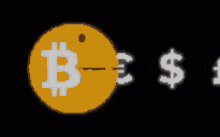Posted on February 13, 2025
Bitcoin’s Distributed Consensus Protocol
The distributed consensus protocol in Bitcoin is primarily achieved through a mechanism known as Proof of Work (PoW). Here’s a detailed explanation of how it works:
1. Transaction Broadcasting
Process: When a user initiates a transaction, it is broadcast to the Bitcoin network. Each node on the network verifies the transaction for validity (e.g., checking signatures, ensuring the sender has the funds).
2. Transaction Pool
Mempool: Valid transactions are collected into a pool known as the “mempool” where they wait to be included in a block.
3. Block Creation
Miners: Specialized nodes known as miners collect transactions from the mempool to form a block. Each block has a maximum size, which implicitly limits the number of transactions per block.
4. Proof of Work (PoW)
Hash Functions: Miners compete to solve a cryptographic puzzle that requires finding a hash below a certain target value (this is the “work” in Proof of Work). This hash is generated by hashing the block header, which includes:
A version number
The hash of the previous block
A Merkle root of the transactions in the block
A timestamp
The target difficulty (bits)
A nonce (number used once)
Difficulty Adjustment: The target difficulty is adjusted approximately every two weeks (or 2,016 blocks) to ensure that blocks are added to the blockchain roughly every 10 minutes on average, regardless of the total computing power of the network.
5. Consensus on Block Validity
Nonce Guessing: Miners increment the nonce in the block header, recalculating the hash until they find one that meets the target criteria. This process is computationally intensive and requires significant energy.
Block Found: When a miner finds a valid hash, they broadcast this new block to the network.
6. Network Verification
Validation: Other nodes on the network verify the new block:
Check if the Proof of Work is valid (the hash meets the target).
Ensure all transactions in the block are valid and not conflicting with any transactions in the blockchain.
Verify the block’s previous block hash matches the last block in their version of the blockchain.
7. Chain Growth
Longest Chain Rule: If multiple blocks are found at nearly the same time, nodes work on extending the longest (or heaviest, in terms of cumulative proof of work) chain they are aware of. This rule ensures that the network converges on a single version of history over time.
8. Incentives for Miners
Block Rewards: The miner who successfully adds a block to the blockchain receives a reward in newly minted bitcoins plus transaction fees from the transactions included in the block. This incentivizes miners to participate in the consensus process.
9. Security and Trustlessness
Decentralization: Since no single entity controls the majority of mining power, the network is decentralized, making it resistant to attack or manipulation.
Immutability: Once a block is deep enough in the chain, altering it would require redoing the work for that block and all subsequent blocks, which becomes prohibitively expensive and time-consuming.
This mechanism ensures that Bitcoin operates in a trustless environment where consensus emerges from the collective agreement on the state of transactions, secured by the economic incentive of mining and the computational difficulty of altering past transactions.





 Bitcoin
Bitcoin  Ethereum
Ethereum  Tether
Tether  XRP
XRP  Solana
Solana  Dogecoin
Dogecoin  Bitcoin Cash
Bitcoin Cash  Monero
Monero  Zcash
Zcash  Litecoin
Litecoin  PAX Gold
PAX Gold